The history of creation and review of FED cameras
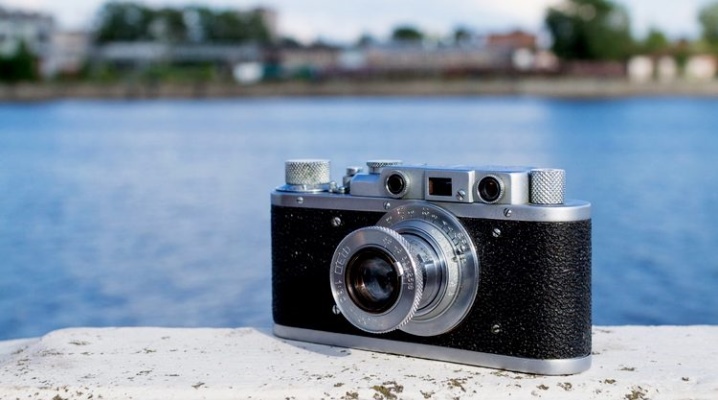
A review of FED cameras is important if only because it shows that it is quite possible to do excellent things in our country. But in order to understand the meaning and specificity of this brand, it is necessary to take into account the history of its creation. And for real collectors and connoisseurs, information about the use of such photographic equipment will be important.
History of creation
Many have heard that the FED camera is the best in the industry of the USSR in the pre-war period. But not everyone knows the nuances of its appearance. They were created by former street children and other antisocial minors after 1933. Yes, the model by which the Soviet camera was launched was (according to some experts) the foreign Leica 1.
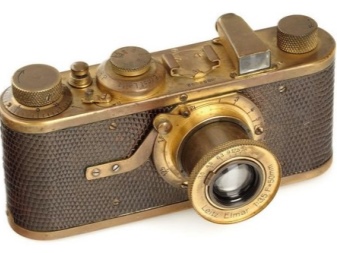

But the main thing is not in this, but in the outstanding pedagogical experiment, until now underestimated by professionals (and the release of cameras was only a small part of the whole business).
At first, the assembly was carried out in a semi-handicraft mode. But already in 1934 and especially 1935, the scale of production increased significantly. It is important to understand that assistance in organizing the process was provided by the best specialists from those who could be involved at all. The first cameras consisted of 80 parts and were assembled by hand. In the post-war period, the FED's photographic equipment was re-created: the designs were already original, and the production was carried out at an "ordinary" industrial enterprise.
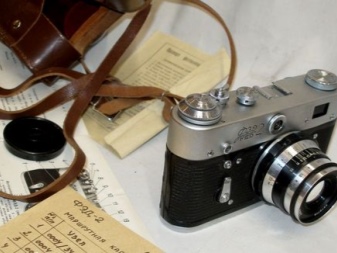
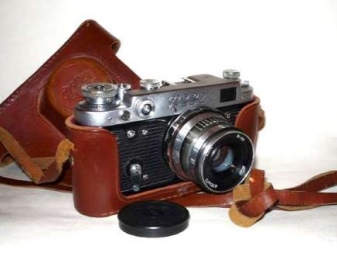
It was during this period that the number of collected specimens reached its peak. They were made in tens of millions. The technical backwardness of production became a problem. After the opening of the market in the early 1990s, FED looked extremely pale against the background of foreign products. And soon the production had to be closed completely.
Main characteristics
Cameras of this brand were distinguished by large technological tolerances. Therefore, the lenses were individually customized for each copy.
For your information: the decoding of the name is straightforward - “F. E. Dzerzhinsky ".
The adjustment hole, which was made in the rear wall, was closed with a special screw to prevent moisture and dirt from entering. The rangefinder in pre-war samples was not combined with the viewfinder.
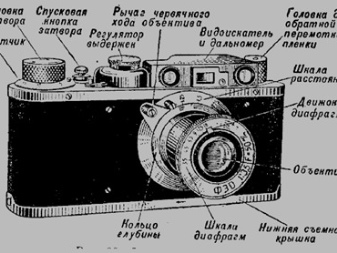
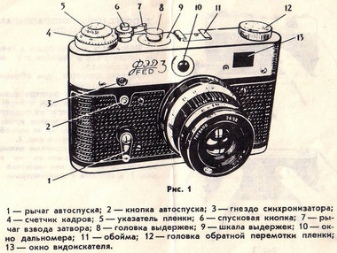
In addition to all these inconveniences, the process of loading the film was also a kind of adventure. In 1952, the shutter speed system and the start button were changed. Other parameters of the device remained unchanged. Late post-war samples already made it possible to take pictures of quite good quality, even by modern standards. As for the earliest samples, released before 1940, there is no reliable information about their real capabilities.
Model overview
Curtain shutter
If you do not consider very old film samples, then first of all deserves attention "FED-2"... This model was assembled at the Kharkov Machine-Building Association from 1955 to 1970 inclusive.

The designers have implemented a full-fledged combination of the viewfinder and rangefinder. The nominal rangefinder base was increased to 67 mm. The back wall can already be removed.
And yet this model was inferior to both the Kiev and the imported Leica III in terms of the main base. The engineers were able to solve the problem of eyepiece diopter adjustment.
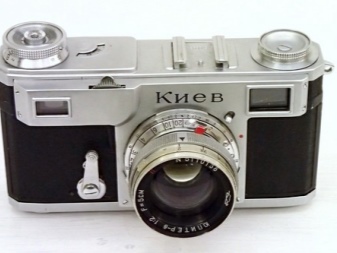
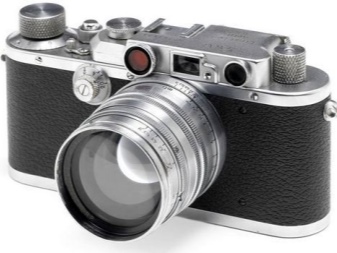
For this purpose, a lever was used above the rewind element. The focal-type shutter was still accompanied by fabric shutters. Depending on the specific modification, the maximum shutter speed could be either 1/25 or 1/30, and the minimum was always 1/500 of a second.
"FED-2", produced in 1955 and 1956, was distinguished by:
lack of synchronous contact and automatic descent;
using the lens "Industar-10";
a square rangefinder window (later it always had a round shape).
The second issue, which took place in 1956-1958, is distinguished by the use of synchronous contact.


Also, the engineers slightly changed the design of the rangefinder. The “Industar-26M” lens was used by default. In the third generation, which came in 1958-1969, a self-timer appeared, designed for 9-15 seconds. Along with the "Industar-26M" could also be used "Industar-61".
In 1969 and 1970 the fourth generation of the FED-2L camera was produced. Its shutter speeds ranged from 1/30 to 1/500 of a second. A trigger platoon was provided by default. The nominal rangefinder base was reduced to 43 mm. The device was equipped with the same lenses as the previous modification.
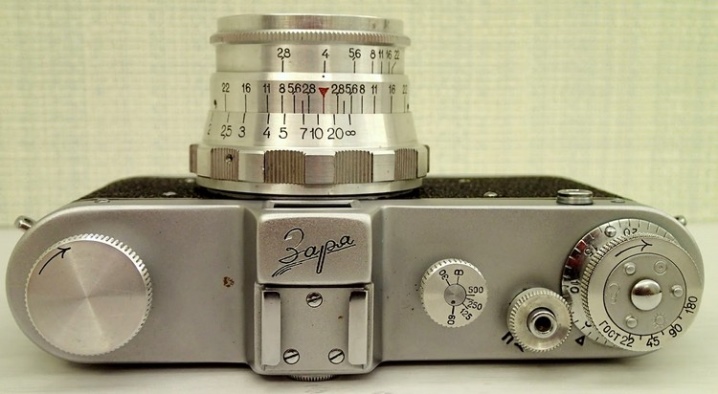
Zarya cameras became a continuation of the third generation of Kharkov cameras. This is a typical dial device. It lacked an automatic descent.
The default was "Industar-26M" 2.8 / 50. In total, about 140 thousand copies were released.
FED-3, which was produced in 1961-1979, there are several new exposure levels - 1, 1/2, 1/4, 1/8, 1/15. It is difficult to say if this was a real advantage. Even when using a wide-angle lens, handheld shooting often results in blurred images. The solution is partially to use a tripod, but this is already an option for professional photographers.
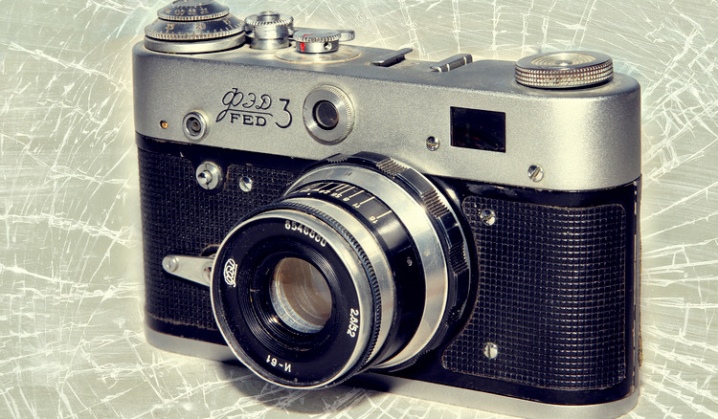
The designers tried to limit themselves to the smallest possible changes. The placement of the delay retarder inside the hull has become possible due to its greater height. Reducing the rangefinder base to 41 mm turned out to be a forced decision. Otherwise, it was impossible to put the same retarder. Therefore, from a practical point of view, the camera represents a step back from the second version.
For 18 years of production, the model has undergone certain changes. In 1966, a hammer was added to facilitate the cocking of the bolt. The shape of the body has been simplified and the top has become smoother. In 1970, a mechanism appeared that blocked the incomplete cocking of the shutter. Excerpts could be indicated both on the head itself and on the "chase" around it.
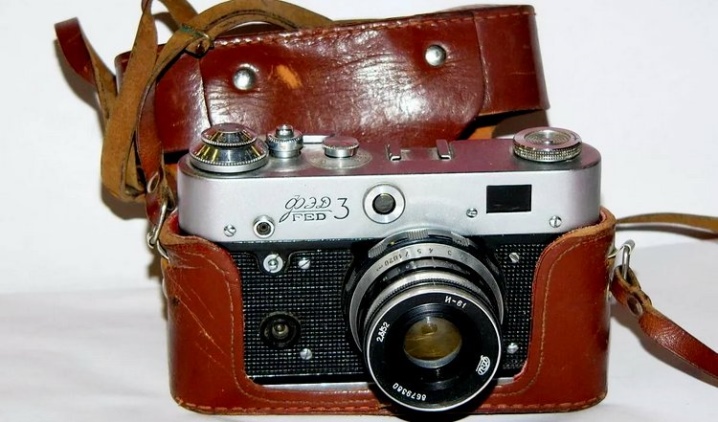
In total, "FED-3" produced at least 2 million copies. The “Industar-26M” 2.8 / 50 lens was installed by default. A wired synchronous contact is provided. Weight excluding lens is 0.55 kg. The viewfinder is similar to the one used by FED-2 and has average performance.
The shutter speed can be changed both after the shutter is cocked and in the deflated state. But this possibility is not provided in all modifications. When the bolt is cocked, the head will rotate. Convenience is enhanced by clear point orientation. Optics are mounted according to the M39x1 standard.
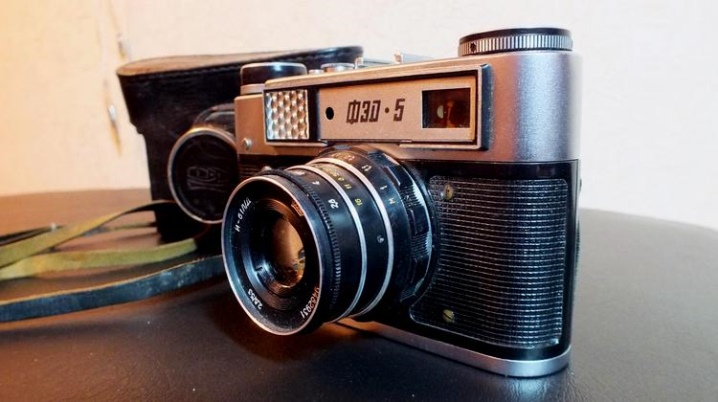
FED-5 also deserves attention. The release of this model fell on 1977-1990. Cocking the shutter and rewinding the film allows the trigger. The body is made of metal, and the back wall can be removed. The use of smooth nozzles with a connecting diameter of 40 mm is allowed.
Other parameters:
recording a frame on photographic film 135 in standard cassettes;
lens with coated optics;
sync contact exposure at least 1/30 second;
mechanical self-timer;
socket for a tripod with a size of 0.25 inches;
built-in exposure meter based on selenium element.
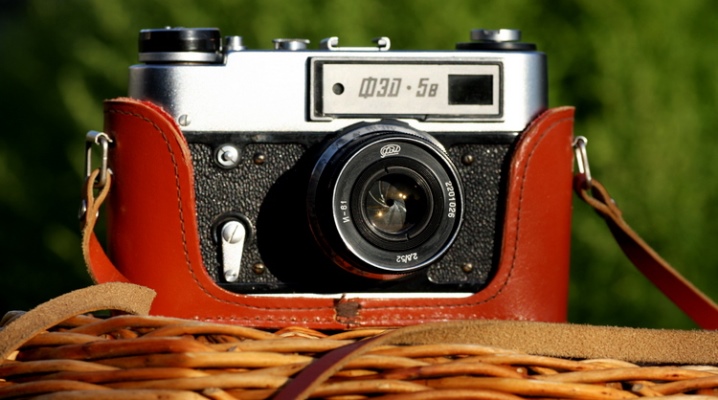
With central shutter
It is worth mentioning and "FED-Mikron", also produced at the Kharkov enterprise. The years of production of this model are from 1968 to 1985. Experts believe that the Konica Eye camera served as a prototype. In total, the release reached 110 thousand copies. Characteristic features - a scale semi-format design with a typical charging with cassettes (no other similar models were made in the USSR).
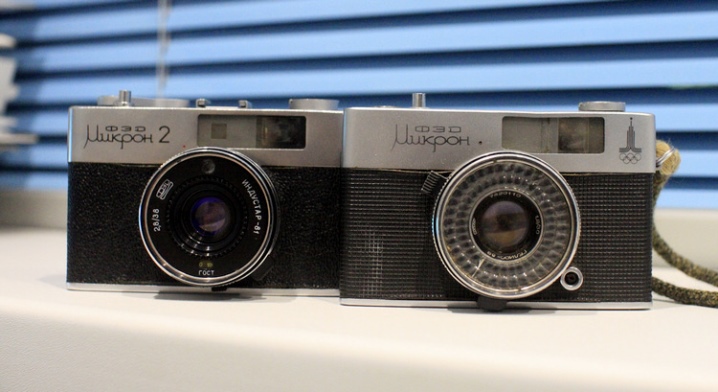
Technical specifications:
work on perforated film;
die-cast aluminum body;
lens viewing angle 52 degrees;
aperture adjustable from 1 to 16;
optical parallax viewfinder;
Tripod socket 0.25 inch;
interlens shutter-diaphragm;
automatic descent is not provided.
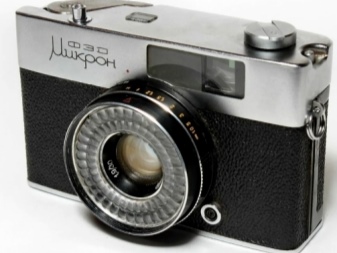
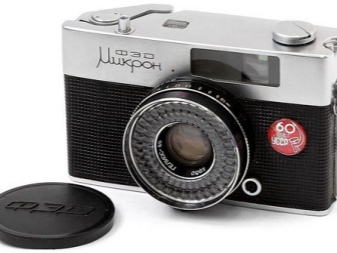
Already in the early samples, automatic development of the optimal exposure was practiced. The system may indicate poor shooting conditions. The shutter is cocked by the trigger method. The mass of the camera is 0.46 kg. The dimensions of the device are 0.112x0.059x0.077 m.
A relatively rare model is FED-Atlas. Another name for this modification is FED-11. The Kharkiv enterprise was engaged in the release of such a modification from 1967 to 1971. An early version (1967 and 1968) lacked the self-timer. Also, from 1967 to 1971, a modification with a self-timer was performed.
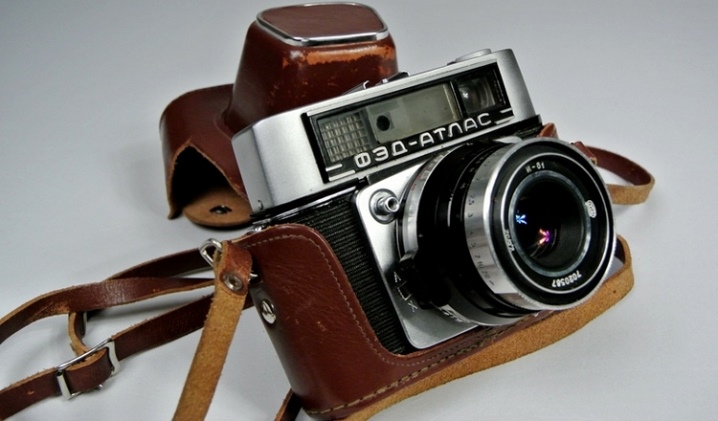
"FED-Atlas" meant the use of perforated film in standard cassettes. The device is equipped with a die-cast aluminum housing. The designers have provided a mechanical self-timer and a lens shutter. In auto mode, shutter speeds take from 1/250 to 1 second. Freehand shutter speed is indicated by the symbols B.
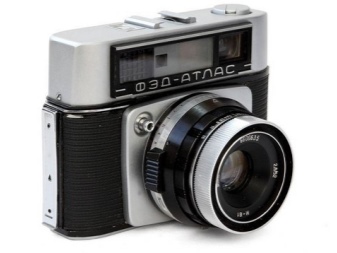

The optical parallax viewfinder was combined with a 41 mm rangefinder. A hammer platoon sets in motion the shutter and film rewinding system. Focus can be set from 1m to unlimited coverage. The Industar-61 2/52 mm lens cannot be removed. The thread for the tripod socket is 3/8 ''.
Instructions
It is appropriate to consider the use of cameras of this brand on the example of the FED-3 model. Load the camera with a film cassette under standard dim lighting. First, rotate the nut of the case by unscrewing the screw. Then you can remove the device from the case. The clamps of the locks on the lid must be lifted and then turned ½ turn until it stops.
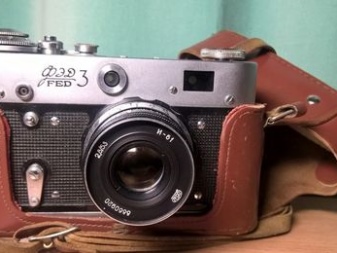
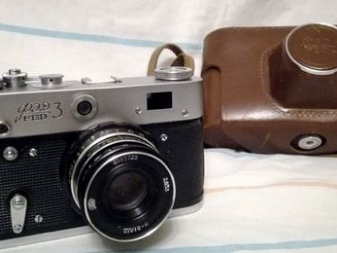
Next, you have to press down on the lid with your thumbs. It must be opened by carefully moving it aside. After that, the cassette with the film is placed in the designated slot. From there, pull out the end of the film with a length of 0.1 m. It is inserted into the chain of the receiving sleeve.
By rotating the shutter lever, the film is wound onto the sleeve, achieving its tension. It is necessary to ensure that the teeth of the drum are tightly combined with the perforation of the film. After that, the camera cover is closed. The unlit film is fed to the frame window by two clicks of the shutter. After each platoon, you need to press the release film; the cocking lever must be brought to the stop in order to avoid blocking the button and the shutter associated with it.
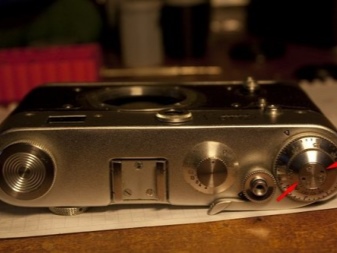

The limb of the sensitivity meter must be aligned with the film type index. For shooting distant or located at a precisely set distance, objects are sometimes used with the settings on the distance scale. Photographing of long objects or extended chains of objects is performed after adjusting the sharpness scale. Precise focusing is possible only after diopter adjustment of the viewfinder according to the photographer's vision. The optimal exposure is determined using an exposure meter or specialized tables.
If you need to recharge the device for further shooting, the film should be rewound back into the cassette. The cover must be tightly closed during rewinding. The process ends when the effort to distort the film is minimal. Then put the camera back into the case and secure with the mounting screw.
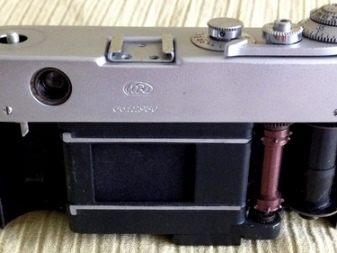

Subject to the basic rules of use, FED cameras allow you to take very good pictures.
For more information about the FED-2 film camera, see the video below.













There were models like FED-Mikron, half-frame (for a standard cassette). These are the Chaika cameras (Chaika, Chaika-2, Chaika-2M, Chaika-3), produced from 1965 to 1967 by the Vavilov Minsk Mechanical Plant.
The comment was sent successfully.